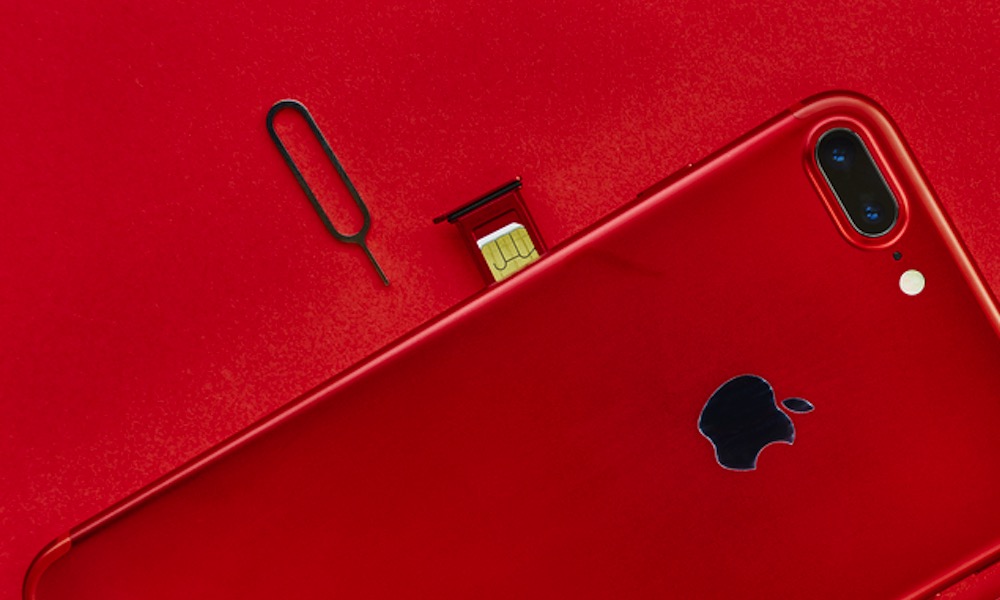‘SIM Swapping’ Explained | What’s SIM Swapping and Why Is It So Dangerous?
 Credit: Hadrian / Shutterstock
Credit: Hadrian / Shutterstock
Toggle Dark Mode
There are countless ways for scammers to get a hold of your information – and just when you think you know everything, they come up with new ways to attack you.
There are already many ways for scammers to target you that you probably already know about, like how hackers and scammers can use malicious software to get your computer or how easily people can start phishing for information online. But there are other methods that aren’t as popular. A great example is something called SIM swapping.
Not all of us have heard of SIM swapping before, but it’s just as dangerous as other methods of hacking and scamming. Here’s what you need to know.
What’s a SIM?
Let’s start with the basics. Not all of us know what a SIM is, so this is a great place to start.
- A Subscriber Identity Module, or SIM, is a small chip that goes inside your phone (that you can swap out to another phone if you want).
- SIM cards are unique and can store a little bit of data. Yes, kids, we used to store our contacts on SIM cards back in the day.
- SIM cards also store your phone number, which is unique to that SIM card.
As long as your SIM card is active, no other SIM or person can have your phone number. Even if you switch phones, your number will still be the same as long as you have that SIM card.
What Is SIM Swapping?
We can talk about SIM swapping now that we know what a SIM is. The SIM swap scam, also known as simjacking or SIM splitting, is a fraud where one person tries to take over a victim’s account by exploiting the two-step verification most websites require these days.
The scammer basically gets the SIM’s phone number and attempts to fraudulently log into an online account (like your bank) when the second step for authentication is a text message or a phone call.
In plain words, the scammer gets another person’s phone number and uses it to log into their account by using the two-factor verification, which requires a text message or phone call.
How Does SIM Swapping Work?
SIM swapping isn’t the easiest of scams, but it’s still possible. Basically, the scammers have to get enough information about a person beforehand. The scammer will then use this information to call the victim’s phone provider and try to convince them to port the victim’s phone number to the scammer’s SIM card.
How can they do that? Scammers will use different methods. They can use malicious software to gather information from a person’s device or send phishing emails in which the scammers say they are the phone provider and ask for the details they need.
A scammer might use a much simpler method – just talking to a person. They might start socializing and secretly gathering the information they need to talk to the provider. That’s why you should try not to provide much information, even in casual conversations.
Consequences of SIM Swapping
As you can probably tell, SIM swapping is something you don’t want to experience. There can be many problems if someone manages to get a hold of your phone number with this method.
Not only could a scammer access your social media platforms, like Facebook, Instagram, or TikTok; they could also get into your email or, worse, your bank accounts and other investing platforms you use.
Scammers can then use your profile to start phishing your friends and family, make bank transfers, or even blackmail you so that you give them the money they want.
How Will You Know If You’re a Victim of SIM-Swapping?
- The quickest way to know if your SIM has been swapped will be found on your phone. Your device will immediately lose connection, and you won’t be able to make cellular calls, send text messages, or even use your data.
- Another way to find out is when a scammer tries to enter your accounts using a two-step verification process. Platforms like Gmail will notify you if it thinks someone (who wasn’t supposed to) enters your account.
- The other way you might find out is when you start seeing some changes on your social media platforms or other accounts you use. If you see transactions or posts, you’re sure you didn’t post, someone else might be using your account.
What Can I Do If I’m a Victim of SIM Swapping?
If you notice that your SIM starts to have problems right away, you should immediately contact your mobile service provider. You can also get one step ahead and start changing the two-factor authentication method on all your platforms, so you receive emails instead. Another solution would be to change your email address—and phone number if possible— on as many platforms as you can.
What Can I Do to Prevent SIM Swapping?
Fortunately, you don’t have to wait until you’ve been SIM swapped before you take action. You can start making sure you’re secure against these attacks.
You can start by talking to your mobile service provider. You can ask what security measures they have against SIM swapping and what kind of information they ask before porting your phone number to a different SIM card.
It would be best to consider making your social media profiles more secure and private. Not only posting a lot of information can be dangerous, but with some recent Facebook data breaches, you really can’t trust any social media platform to store your information safely. You should also avoid giving too much information to most people, both online and in real life.
You can also try opening different email accounts and use your most private email account—the one almost no one knows about—to log into your most important accounts, like your bank and brokerage accounts.
Be careful of the emails you get. Remember that one method scammers commonly use is phishing, in which they impersonate a legitimate company to get your private information. Phishing is more common and easier to do than you might think, so always avoid giving sensitive information in any email. Call or visit the company directly to make sure it’s them.









